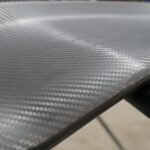To become a more inclusive company, eliminating discrimination in hiring and giving everyone a chance is already a first step. But it is also crucial to allow accessibility without assistance to people with reduced mobility or disabilities . Find out how to choose the right PMR equipment for your business in this buying guide. From products dedicated to safety to grab bars for WCs, including shower accessories and floor markings : find everything you need to guarantee access to your premises for everyone .
Buying guide: choosing the right
What is the PMR standard?
Before going into the details of the equipment, it is first necessary to clearly understand what the acronym PMR covers.
DEFINITION
The acronym PMR means “person with reduced mobility” . It designates all individuals having difficulty in moving, permanently or temporarily. Thus, it applies to people with motor disabilities, blindness, deafness, but it also affects cases of injury, pregnancy or carrying a child in a stroller. This term is therefore not synonymous with a person with a disability.
The PMR standard designates all the obligations in terms of development that allow everyone to have access to a place without assistance. The latter will therefore have to have several dedicated products, in particular:
Materialized paths for the visually impaired;
Announcements adapted to the hearing impaired;
Facilities allowing wheelchair access.
EUROPEAN DIRECTIVES ON INCLUSION
A European directive that came into force in 2000 sets the context for offering equal treatment and the same working conditions to all, without discrimination linked to religion, beliefs, disability or age .
Since that date, the European Union has defined guidelines at the start of each decade to take a further step towards the inclusion of all. Thus, the Disability Rights Strategy 2021-2030 commits Member States to equal treatment, particularly in political life, education, health services and employment .
MANUTAN’S COMMITMENT TO ACCESSIBILITY
Enabling all companies to offer more inclusive facilities is one of the many challenges that Manutan has set itself. In addition to offering a catalog of more than 2,000 products dedicated to PRM and disabled accessibility , we support the players concerned in the acquisition of equipment for people with reduced mobility . Indeed, buying an item that complies with the standard is not enough, it must also be installed correctly to comply with the legislation. This is particularly the case for grab bars, the fixing conditions of which are highly regulated.
This is why we have developed this buying guide, as well as the widest possible product offer , in different price ranges and with the possibility of delivery.
Disabled-friendly sanitary facilities
The toilets are one of the most problematic areas for people with reduced mobility. Often undersized and located in corners to save space, toilets and showers can quickly become inaccessible to people in wheelchairs in particular.
WHAT SURFACE FOR A DISABLED TOILET?
One of the conditions for a toilet to be suitable for people with reduced mobility is that a wheelchair can maneuver there . To do this, a circle of 1.5 m in diameter must be left free in the cabin or outside, in front of the door.
WHICH FIXING FOR A PMR WASHBASIN?
To comply with the PMR standard, a washbasin or washbasin must be placed at a height from the ground of between 70 cm for the lower part and 85 cm for the upper part . Its depth and size are to be adapted to the use of people in wheelchairs.
Everyone must be able to operate the fittings in a seated position and without rotating the wrist. It is therefore necessary to equip yourself with a suitable basin mixer
WHAT ARE THE ACCESSIBILITY STANDARDS FOR THE SHOWERS?
If you need to install a shower in your business premises, obligations apply. To be suitable for people with reduced mobility, it must be equipped with a seating device, such as a shower seat , slightly inclined towards the rear with armrest and backrest for the sake of protection.
PARKING
To allow access to your work spaces for people with disabilities and reduced mobility, it is essential to provide parking spaces with suitable signage and with suitable dimensions. These must represent 2% of the total number of parking spaces and be located near the building entrance or the elevator.
ACCESS TO THE BUILDING
Everyone must be able to gain safe and unaided access to a building . For this, a ramp sometimes needs to be installed.
ACCESS TO STAIRS
So that everyone can identify a staircase and estimate the effort required to climb it, it is essential to adapt it. There are a number of accessories for this, such as tactile tiles or nails , installed 50 cm from the first step, or risers visible on the first and last steps. Non -slip stair nosings help minimize the risk of falling. Finally, it is recommended to include a handrail with the following characteristics:
The furniture is also to be redesigned within the framework of the PMR standard. The idea is to avoid obstacles and dangers while allowing everyone to find their bearings and use the equipment at their disposal.
Thus, the door handles must be able to be operated by people with disabilities. Only the weight of the hand is necessary to maneuver them. Door handles “lever” and pull are therefore to be preferred.
ORIENTATION
For the visually impaired and blind, guide strips must be placed on the ground continuously and in the direction of travel to help them find their way around. The orientation aid strip must be clearly visible and stop 1 m from the door, on the handle side if the door is not automatic, in the middle otherwise.
EVACUATION
For the safe evacuation of people with reduced mobility, it is strongly recommended that people with reduced mobility have an evacuation chair , a very useful accessory in the presence of stairs.











Leave a Reply
You must be logged in to post a comment.